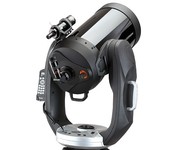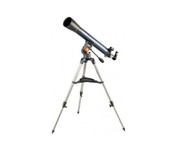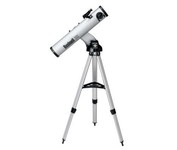Products reviews
Celestron CPC 1100 GPS (XLT) (70 x 280mm) Telescope$2,799.00
Tags:celestron, cpc, 1100, gps, xlt, 70, x, 280mm, telescope, | Celestron AstroMaster 90AZ (50 x 90mm) Telescope$199.00 to $270.00
Tags:celestron, astromaster, 90az, 50, x, 90mm, telescope, | Bushnell NorthStar 78-8831 (525 x 76mm) Telescope$183.00 to $241.00
Tags:bushnell, northstar, 78-8831, 525, x, 76mm, telescope, |
Galileo FS-80 Telescope
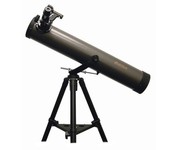
The Galileo FS-80 reflector telescope is a great beginner's reflecting telescope. The large 80mm primary mirror cell collects 33% more light than a 60mm refracting telescope. 1.25 focus housing permits the use of larger higher quality 1.25 eyepieces. Yoke mount makes the telescope easy to manage through altitude / azimuth (Up & Down, Left & Right) movement, and altitude slow motion control rod for precision adjustmentsMinimize
Meade 90AZ-ADR Telescope

Some of the world's top astronomers got started with a telescope just like this one, and so will you. A quality refracting telescope for land or sky viewing. It's perfect for observing the Moon, planets and land objects like mountains, trees, and wildlife.
Bushnell NorthStar 78-8890 (300 x 90mm) Telescope

The NorthStar® telescopes offer amateur astronomers state-of-the-art computer-driven location and tracking capability with simple, push-button control. With a built-in data base of 20,000 celestial objects, you simply call up your target on the hand-held control module, enter a simple "Go To" command and the NorthStar computer does the rest. Once locked on, tracking the object for prolonged viewing is automatic. The innovative RVO (Real Voice Output) feature provides a fun, interactive way to explore the night sky. The remote, hand-held control module features red, backlit push buttons and a red, illuminated LCD read-out for easy viewing without impairing your night vision. Minimize
Celestron PS 60 (175 x 60mm) Telescope
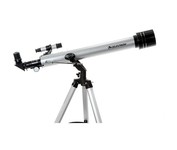
The PowerSeekers come in a choice of refractor or reflector, equatorial or altazimuth mount design. The PowerSeekers come with all coated glass optical components with for enhanced image brightness and clarity. The Newtonian reflectors offer larger aperture and greater light gathering power needed to resolve the faint detail of hundreds of deep-sky and other celestial objects.Minimize
